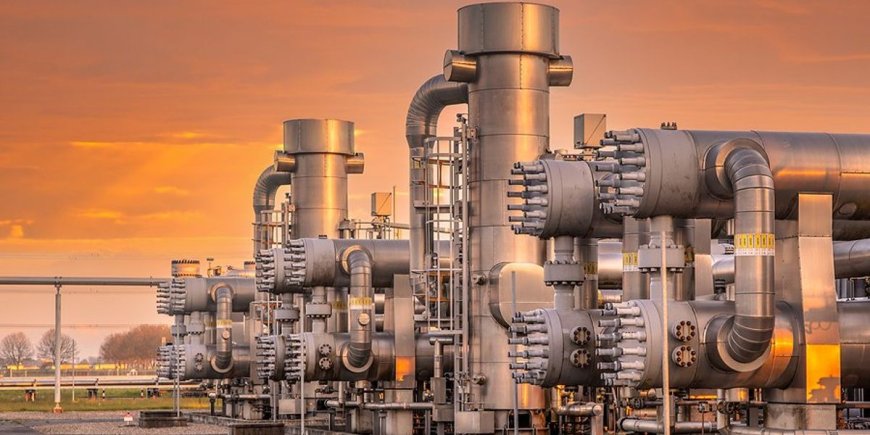Environmental assessment debate heats up over BC Hydro’s LNG project
Environmental assessment debate heats up over BC Hydro's LNG project Environmental Health News

BC Hydro Seeks Environmental Pass-Through for LNG Transmission Line

BC Hydro is currently seeking an environmental pass-through for a new transmission line that is intended to power the LNG and mining industries. This quest highlights a conflict between energy progress and ecological protection, as reported by Sarah Cox for The Narwhal.
In Summary:
- BC Hydro is aiming to bypass an environmental assessment for the new transmission line.
- The proposed “alternative streamlined process” lacks clear environmental mitigation conditions and transparency.
- The $3 billion project has the potential to impact private properties, farmlands, waterways, and endangered species, raising concerns about the environmental and social costs.
Key Quote:
“We are prepared to work with you to secure a federal commitment to this investment in infrastructure to support our collective climate change goals.” – Letter from six First Nations leaders
Importance of Sustainable Development Goals (SDGs):
The exemption of this project from rigorous environmental review poses a risk to sustainable development. It is crucial for national energy policies to consider the Sustainable Development Goals (SDGs) and reflect the tension between economic growth and environmental conservation.
By focusing solely on the climate benefits of gas versus coal, the industry seeks to delay a broader debate on the deficits of gas versus renewables. It is important to consider the long-term environmental impacts and strive for a more sustainable energy future.
SDGs, Targets, and Indicators
| SDGs | Targets | Indicators |
|---|---|---|
| SDG 7: Affordable and Clean Energy | 7.2: Increase the share of renewable energy in the global energy mix | No specific indicators mentioned in the article |
| SDG 9: Industry, Innovation, and Infrastructure | 9.4: Upgrade infrastructure and retrofit industries to make them sustainable | No specific indicators mentioned in the article |
| SDG 11: Sustainable Cities and Communities | 11.4: Strengthen efforts to protect and safeguard the world’s cultural and natural heritage | No specific indicators mentioned in the article |
| SDG 13: Climate Action | 13.1: Strengthen resilience and adaptive capacity to climate-related hazards and natural disasters | No specific indicators mentioned in the article |
| SDG 15: Life on Land | 15.5: Take urgent and significant action to reduce degradation of natural habitats | No specific indicators mentioned in the article |
1. Which SDGs are addressed or connected to the issues highlighted in the article?
- SDG 7: Affordable and Clean Energy
- SDG 9: Industry, Innovation, and Infrastructure
- SDG 11: Sustainable Cities and Communities
- SDG 13: Climate Action
- SDG 15: Life on Land
The issues highlighted in the article are connected to these SDGs because they involve energy progress, infrastructure development, environmental protection, and climate change mitigation.
2. What specific targets under those SDGs can be identified based on the article’s content?
- Target 7.2: Increase the share of renewable energy in the global energy mix
- Target 9.4: Upgrade infrastructure and retrofit industries to make them sustainable
- Target 11.4: Strengthen efforts to protect and safeguard the world’s cultural and natural heritage
- Target 13.1: Strengthen resilience and adaptive capacity to climate-related hazards and natural disasters
- Target 15.5: Take urgent and significant action to reduce degradation of natural habitats
These targets are relevant to the issues discussed in the article as they address the need for renewable energy, sustainable infrastructure, protection of natural heritage, climate resilience, and conservation of natural habitats.
3. Are there any indicators mentioned or implied in the article that can be used to measure progress towards the identified targets?
No specific indicators are mentioned or implied in the article that can be used to measure progress towards the identified targets. The article mainly focuses on the conflict between energy progress and ecological protection without providing specific indicators for measuring progress.
Overall, the article highlights the importance of balancing economic growth with environmental conservation and the potential risks to sustainable development posed by exemptions from rigorous environmental review.
4. SDGs, Targets, and Indicators
| SDGs | Targets | Indicators |
|---|---|---|
| SDG 7: Affordable and Clean Energy | 7.2: Increase the share of renewable energy in the global energy mix | No specific indicators mentioned in the article |
| SDG 9: Industry, Innovation, and Infrastructure | 9.4: Upgrade infrastructure and retrofit industries to make them sustainable | No specific indicators mentioned in the article |
| SDG 11: Sustainable Cities and Communities | 11.4: Strengthen efforts to protect and safeguard the world’s cultural and natural heritage | No specific indicators mentioned in the article |
| SDG 13: Climate Action | 13.1: Strengthen resilience and adaptive capacity to climate-related hazards and natural disasters | No specific indicators mentioned in the article |
| SDG 15: Life on Land | 15.5: Take urgent and significant action to reduce degradation of natural habitats | No specific indicators mentioned in the article |
Behold! This splendid article springs forth from the wellspring of knowledge, shaped by a wondrous proprietary AI technology that delved into a vast ocean of data, illuminating the path towards the Sustainable Development Goals. Remember that all rights are reserved by SDG Investors LLC, empowering us to champion progress together.
Source: ehn.org

Join us, as fellow seekers of change, on a transformative journey at https://sdgtalks.ai/welcome, where you can become a member and actively contribute to shaping a brighter future.







